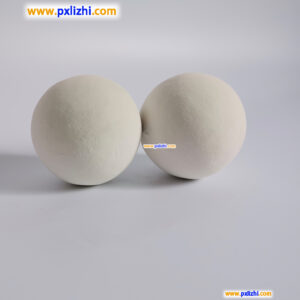
# Inert Ceramic Ball Applications in Industrial Processes
## Introduction to Inert Ceramic Balls
Inert ceramic balls are widely used in various industrial processes due to their excellent chemical stability, high temperature resistance, and mechanical strength. These small spherical ceramic pieces play a crucial role in supporting catalysts, distributing gases and liquids, and protecting sensitive equipment in harsh industrial environments.
## Key Properties of Inert Ceramic Balls
The effectiveness of inert ceramic balls in industrial applications stems from their unique combination of properties:
- High chemical inertness – resistant to acids, alkalis, and organic solvents
- Excellent thermal stability – can withstand temperatures up to 1600°C
- Superior mechanical strength – resistant to crushing and abrasion
- Low water absorption – maintains structural integrity in wet conditions
- Uniform size distribution – ensures consistent performance in packed beds
## Major Industrial Applications
1. Catalyst Support in Petrochemical Industry
Inert ceramic balls serve as essential support media for catalysts in reactors and towers. They prevent catalyst particles from compacting while allowing optimal gas or liquid flow through the reactor bed. This application is particularly important in:
- Hydroprocessing units
- Catalytic reforming
- FCC (Fluid Catalytic Cracking) units
2. Gas Distribution in Chemical Processing
The uniform shape and size of inert ceramic balls make them ideal for creating even gas distribution in packed towers and reactors. They help:
- Improve mass transfer efficiency
- Reduce pressure drop
- Prevent channeling effects
3. Thermal Insulation in High-Temperature Processes
Due to their excellent thermal properties, inert ceramic balls are used as insulating materials in:
- Furnaces and kilns
- Heat treatment equipment
- Thermal cracking units
4. Liquid Distribution in Packed Columns
In distillation and absorption columns, inert ceramic balls help:
- Create uniform liquid distribution
- Increase surface area for mass transfer
- Prevent flooding in packed beds
## Selection Criteria for Industrial Applications
When choosing inert ceramic balls for specific industrial processes, engineers consider several factors:
| Factor | Consideration |
|---|---|
| Size | Typically ranges from 3mm to 50mm depending on application |
| Material Composition | Alumina content varies from 23% to 99% for different temperature requirements |
| Crush Strength | Higher strength needed for high-pressure applications |
| Thermal Shock Resistance | Critical for processes with rapid temperature changes |
## Future Trends in Inert Ceramic Ball Applications
The demand for inert ceramic balls continues to grow with advancements in industrial processes. Emerging applications include:
- Clean energy production (hydrogen generation, carbon capture)
- Advanced material
